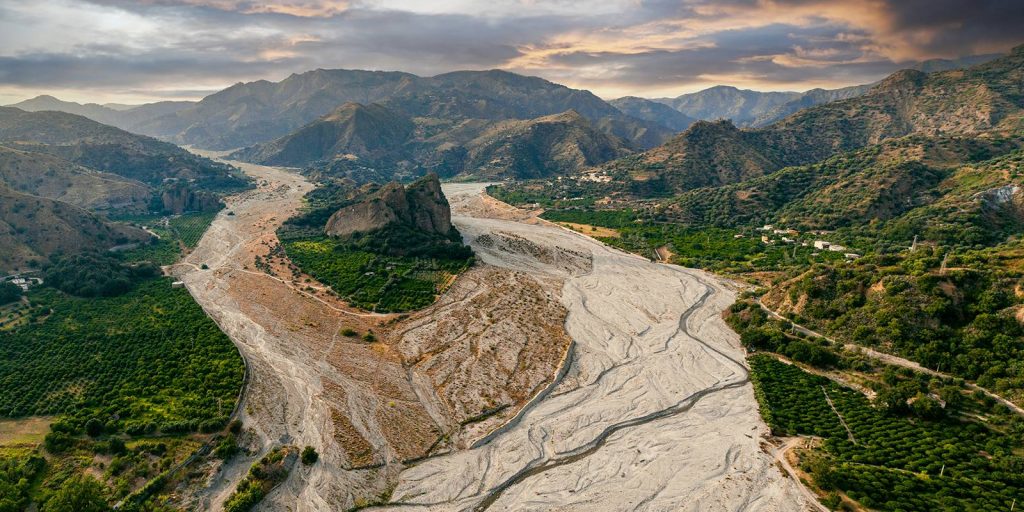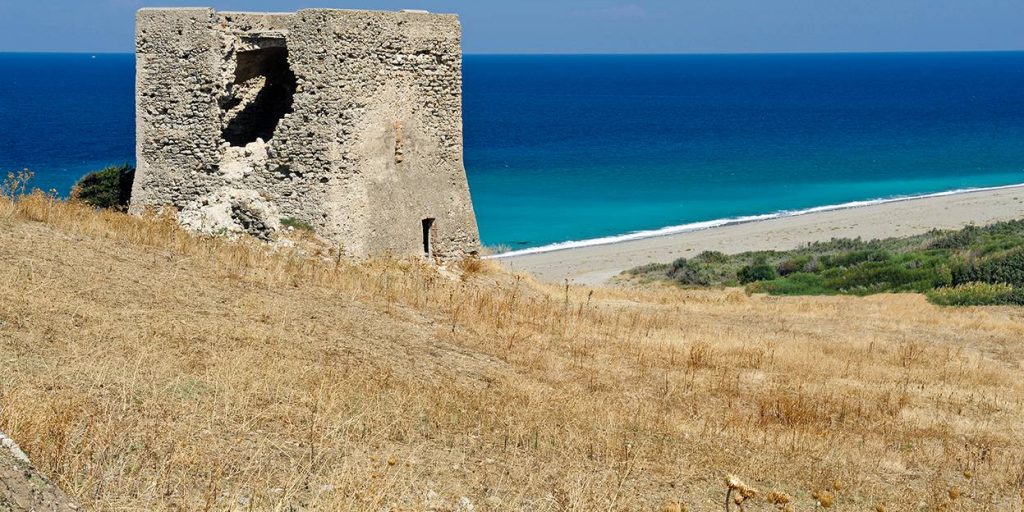The history of Cirò wine dates back to the 8th-century a.C. when the first Greek settlers landed on the Calabrian coast being impressed by the fertility of the vineyards of this territory, to whom they gave the name of "Enotria" or "land where the high vine is cultivated from the ground".

The Greeks were able to give great value to these vineyards, Cirò wine, has always enjoyed the fame of being endowed with great virtues. Cirò DOC wines are produced in the eastern hills of the Sila plateau and on the Ionian coast, in the municipalities of Cirò, Cirò Marina, Crucoli, and Melissa. It is a very small area, where about 500 hectares of DOC vineyards are cultivated, for a production of about 60,000 quintals of grapes per year.
Gaglioppo min 80%
DOC Cirò is mainly known for its red wines, Cirò DOC Rosso is also available in Classico, Superiore, Riserva.
- Cirò Rosso wine cannot be released for consumption before 1 June of the year following the year of production of the grapes.
- The grapes destined for the production of Cirò Rosso wines in the Classico typology must be produced, vinified and aged in the area covering the entire territory of the municipalities of Cirò and Cirò Marina.
- The wines Cirò Rosso and Cirò Rosso Classico come from grapes that ensure a minimum natural alcoholic strength by volume of 13.00% vol. and that when released for consumption have a minimum total alcoholic strength by volume of 13,50% vol. may be awarded the title of Superiore.
- The wines Cirò Rosso Superiore and Cirò Rosso Classico Superiore that have been subjected to an aging of not less than two years, may label the status of Riserva. The period of aging begins on 1 January following the vintage of the grapes.

The key vine of the denomination is Gaglioppo, a native black grape variety that according to the production specification must be used at least 80%.
This grape is particularly resistant to drought and frost, that grows well even in coastal areas where the salinity of the soil is very high, very sensitive however to downy mildew and powdery mildew. The production disciplinary of Cirò DOC Rosso allows for the remaining 20% the use of other red varieties.
Environmental conditions under which vineyards are grown intended for the production of Cirò wines must be the traditional ones of the area, or in any case those most suitable to confer on the wines the characteristics chemical-physical and qualitative necessary.
The planting sixths, the forms of breeding and pruning systems must be those generally used, or those best suited to confer the above characteristics on grapes and wines. It is forbidden any practice of forcing, however, emergency irrigation is allowed.

Cirò DOC can also be produced in Rosé versions (with the same composition of grapes expected for Red) and White (made from 80% Greco di Bianco grapes with the addition of other white berried varieties).
The Denomination of Controlled Origin (DOC) Cirò is preparing to obtain soon the well-deserved recognition of Denomination of Controlled and Guaranteed Origin (DOCG).

The areas of Cirò DOC
From the geological point of view, the area of Cirò is formed by erosion zones. The soil in the valleys and plains consists largely of marl and clay, and the coastal areas are mostly sandy. Particularly characteristic of this territory are the rivers, the immense beds of the Calabrian rivers that flow from the mountains of Sila towards the Ionian Sea. The rivers Nicà and Lipuda, crossing the valleys of the Greek Sila have formed most of the territories of the DOC Cirò.
The location of the vineyards and the composition of the soil appreciably affect the character of wines, this is also thanks to the great versatility of the Gaglioppo grape. In this respect, three main production microzones can be distinguished, whose wines have organoleptic properties peculiar and recognizable:
- The Cirò of the sea
Coastal areas, characterized by predominantly sandy soils, offer delicate wines, rich in tension and salt. The olfactory profile is characterized by fruity notes of yellow raspberry, and peach, with reminders of wild strawberry, while the floral part recalls peony and wild rose, depending on the vintage. The palate shows thin and salty tannins but with extreme finesse and deepness. In some coastal micro areas, the presence of soils rich in red clay gives the wines a fresh-saline balance and depth to the palate. - The Cirò of the plain
Flat areas, with mainly clay soils and often rich in iron, give wines that recall fruits with a thicker red flesh, but not too concentrated, never dense, and never dark, such as raspberry, Visciola, and pomegranate with always in evidence the mentholated part, the salt and a great drinkability. - The Cirò of the hill
In hilly areas, with mainly calcareous soils, are produced wines played on a higher density, but never on opulence, with darker fruits such as crunchy red plum or blackberry. The tannins are full, but always characterized by elegance and tension.

Gaglioppo is a vine that has so much to offer, a variety with great strengths, including, in fact, versatility, but also uniqueness. The wines produced from this grape variety have a strong stylistic recognition, of density, finesse, salinity, of great drinkability, and an unmistakable color, extraordinarily bright. They are good from the start, even in the youngest expressions and ready to drink, but of great longevity, exceptional in the Superiore and Riserva versions. The Gaglioppo is not only a vine of great importance in the history of Italian viticulture, but a variety that will find its place in the international scene, also thanks to its ability to adapt to extreme climatic conditions.






